Crash Exam Retrospective

This past month, I made a small arcade game named Crash Exam for Turbo’s Weekend Game Jam. This tiny game with a big message brought a new set of experiences and challenges as a developer unfamiliar with coding in Turbo. However, in less than three days, I published my first solo Turbo game using a wide range of tools and resources made for developers looking to either start their game dev journey, seasoned developers wanting to switch over to a streamlined game engine, or anyone looking to try their hand at something new.
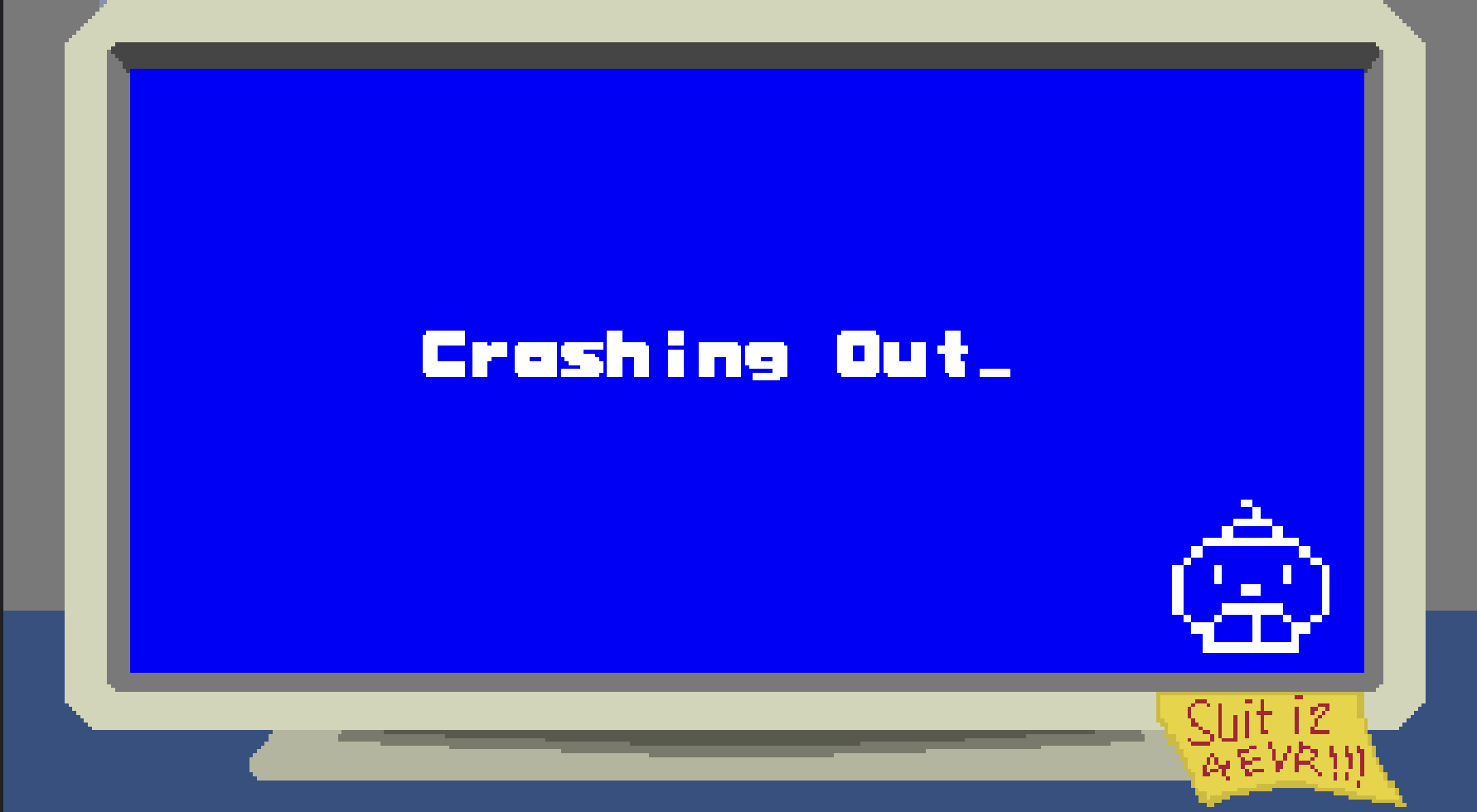
The game jam’s theme was crashing out - a phrase with a wide range of connotations and interpretations in this day and age. With crashing out in mind, I set out to create a properly-scoped game project in Turbo that not only delivered a simple and sleek player experience, but also promoted a powerful, personal message for me as a narrative indie developer by trade.
Concepting
Recently for my monthly game development cycle at Vine Moss Games, I’ve been resorting to paper brainstorming to rapidly get ideas down and away from the computer. It’s too easy to let the screen take up all aspects of game development, and while it is often a natural experience for a game to start and end on the computer, I’ve found a lot more success by using pen and paper to craft ideas. I severely underestimate the power and flexibility of a hand-drawn visual, and Crash Exam would not exist without taking the time to draw out my ideas.
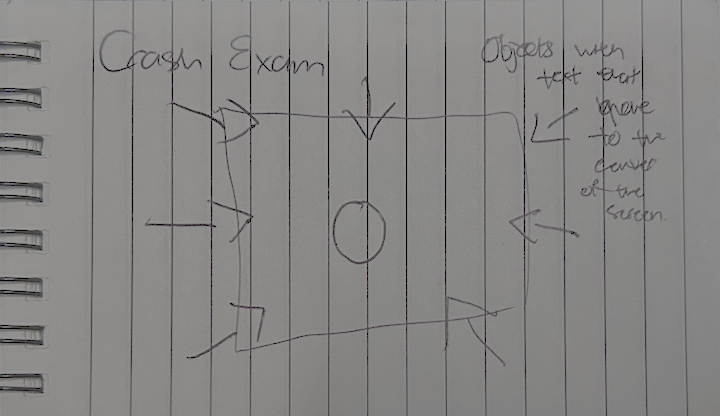
When I think Crashing Out, the word “overwhelming” comes to mind the most, especially the idea of taking on too many tasks and responsibilities at once. I also recently realized that my toughest days as a game developer come when I see my inability to complete everything I wanted to for the day as an opportunity to self-criticize. Taking the sheer volume of tasks I put on my plate and combining it with self-criticism’s destructive nature, I decided to try and create an arcade-style game where damaging, negative words would gravitate toward a character that’s taking a stressful exam. In this initial concept, the player’s goal would be to dispel away these negative words before it hits the character. This idea felt solid to pursue - it was a matter of figuring out how to execute this idea in Turbo.

I followed the Turbo documentation to install the most recent version of the engine, and I worked my way through initial resources - notably the Rust Language Basics guide, Turbo Tools Youtube Videos, and Turbo’s GPT bot - to turn my initial concept into a digital interactive experience. I learned how to initialize variables in Rust, create a countdown-timer, and get an array of words to fly toward the center of the screen in no time. With Turbo’s Gamepad API, I assigned a key input to push away words within a specific radius from the center, and I’m really happy with how the words flew off the screen.
Prototype Idea
This bare-bones prototype was interesting to me, and I was proud of myself for getting to this stage in development, but there were a few questions I needed to ask myself. One was, how does a player win and lose in this game? The quickest and most reasonable idea I came up with was making the words deal damage to the center character, and when the character took a certain amount of damage, the player would be sent to a game lose screen. In conjunction with the game’s lose condition, the easiest win condition would be to send the player to the win screen when the timer I coded hit zero. While I was satisfied with these conditions, my next question related to a critical component of Crash Exam: What did pressing a button to push away words really accomplish?
Iteration
At most, the mechanic for the prototype could be a simple interactive message for players to experience. There would be no difficulty involved, and the idea of pushing negative language away would still resonate with players. However, I didn’t find this action engaging enough for players to patiently wait for the timer to run out, especially when I didn’t have plans during the jam for a complex visual element to keep players entertained. With that in mind, I decided on a different approach for drifting words: CLICKING. If players tried to click away the incoming words, there would be an added element of action that increased engagement, increased difficulty, and added replayability incentive. This felt functionally sound, and easy to adjust with the code structure I used for button inputs. It was only a matter of checking to see if when a player clicked the left mouse button, it was on top of a word, so that the engine knew to send it flying away from the center of the screen.
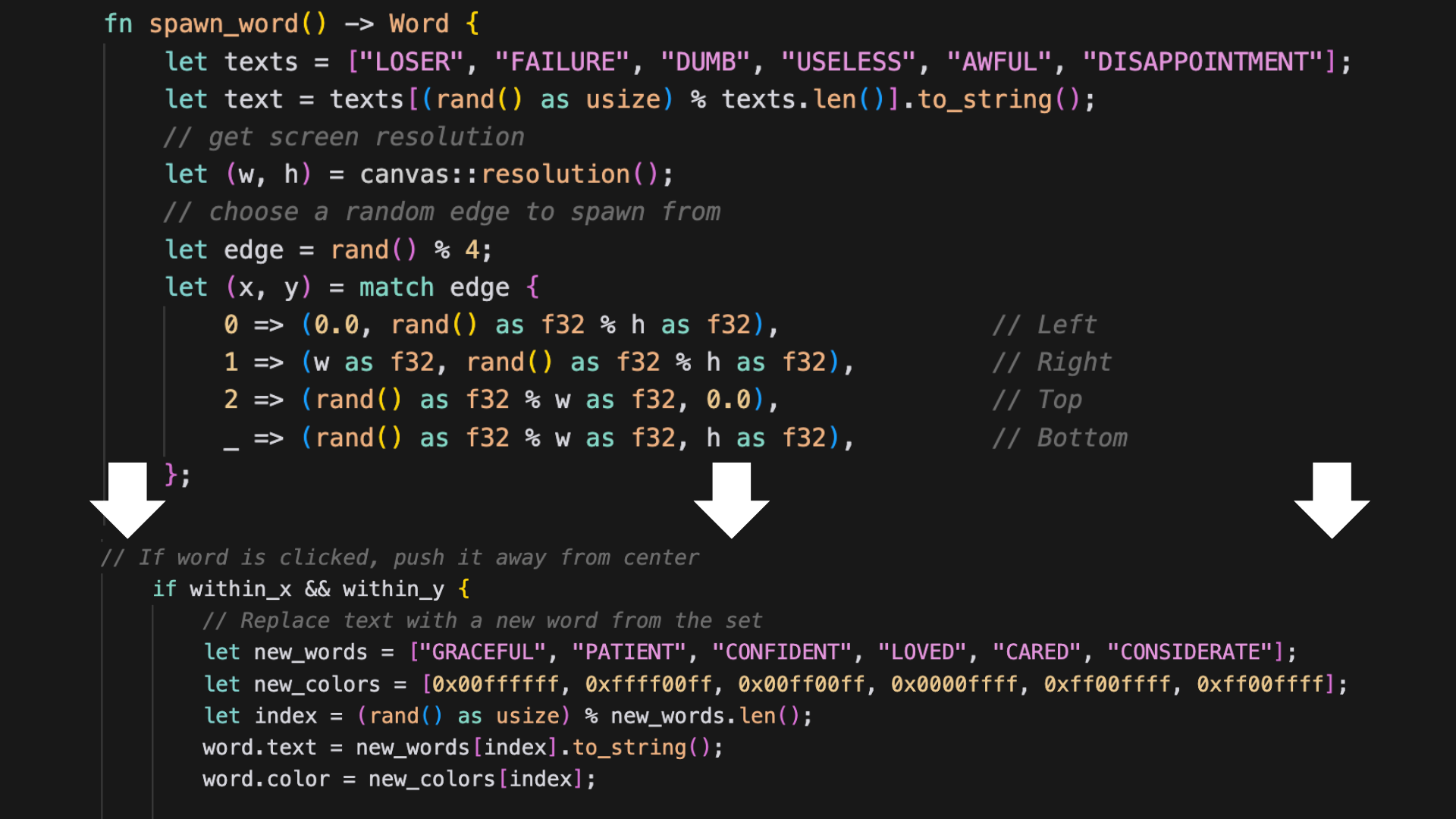
One of my favorite additions with this mechanic change was adding in a new set of positive words that would replace the words the player clicked on! This evolved my initial idea of pushing away negative language. Instead the player replaced those negative words with positive affirmations before sending them out into the world. This adjustment, along with adding in a set of new colors to display, felt like the final mechanical adjustment I wanted before moving onto the rest of the game.
Final Result
Once I had the gameplay loop, I spent the last hours of the Jam designing the art and UI for Crash Exam and came up with a health bar to visually display how many times the character could get hit, a score counter to track how many words were clicked away, and a small animation of a character writing rampantly at their desk. These additions were accompanied by audio assets from my music collection, and in the blink of an eye, I had a complete video game, fully designed in Turbo. With some gameplay testing and adjusting word speed, total health, and total time, I submitted Crash Exam and celebrated the weekend win with a good night’s rest.
Right Steps and Room to Grow
I was extremely proud of myself for the way I prioritized developing Crash Exam. As a visual artist for Turbo primarily, I could have tried solidifying my art direction and designing preliminary assets for my idea first, but I knew I would be setting myself up for unnecessary obstacles. I was coding for the first time in Turbo, and it was imperative for me to take the necessary time to design and develop the game I wanted in its entirety before designing visual assets. When Crash Exam’s game loop was complete, I then created my visual assets to accompany the game I had programmed. As such, I didn’t have too much time to design a variety of assets for the game, but I was more than content with what I created. It goes without saying, but I’d rather have a playable game with less visual assets than a visually-filled experience lacking the essential gameplay I didn’t set time to implement.
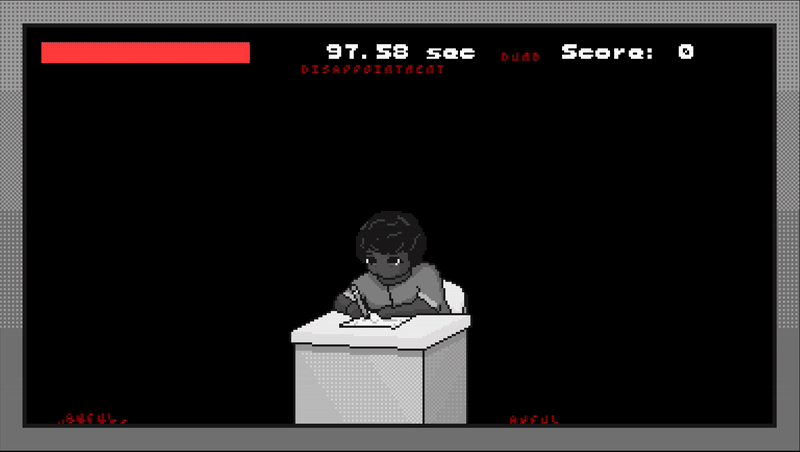
While I’m overall satisfied with Crash Exam, I know I would’ve spent more time adjusting the game’s look and feel, potentially adding in a clearer hit box + VFX to emphasize where the character got hit and how impactful that negative language is. Of course as someone that usually spends days creating animations for games, I had ideas for creating a more complex animation sequence that reacted to the kind of words that were being thrown on the screen. However, this was a level of visual action that would’ve breached beyond the scope I set out for myself anyway, and a weekend jam like this was better spent working on all aspects of design rather than solely focusing on complex, demanding animation sequences.
Remember, Language Matters!
Transforming the vocabulary we use to describe ourselves, especially during high-stress situations, has significant effects on so many aspects of our lives. Work as a game developer is extremely fulfilling, but there are many frustrating and stressful moments that come with making and releasing a game into the world. Remember, we not only need to treat ourselves with grace and kindness, but we also need to create a productive and positive environment in which we create games, including the tools and resources we use as artists. Coding in Turbo was easier than I anticipated, even though I’ve been designing for Turbo games over the past year. The front-row seat to how my teammates made things work didn't change my concern with making a game on my own. However, the resources available enabled me to exactly execute on my initial concept and iterate when I found a more engaging idea, and I felt motivated and capable every step of the way to create the game I wanted to make.
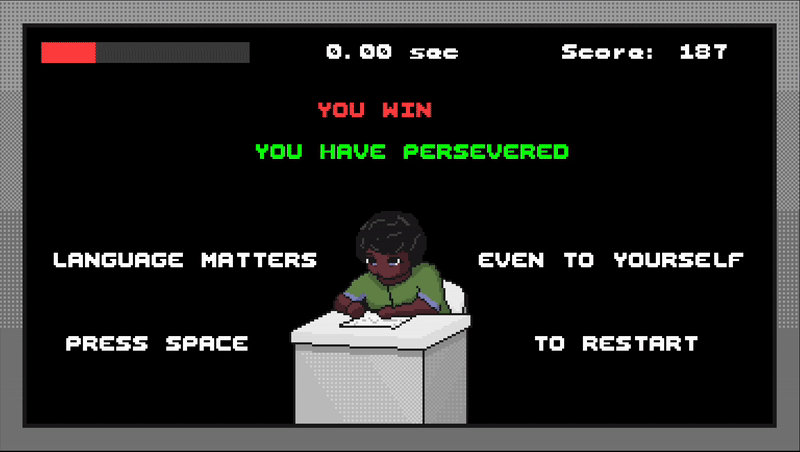
This was my first solo turbo game, but it certainly won’t be my last as I hope to participate in more Turbo Game Jams and use Turbo for external game jams I find along the way. With Crash Exam out and playable, I wish the best for all game devs battling that internal voice - the language you choose to say matters, even what you say to yourself.
Take care ~
~ Dev
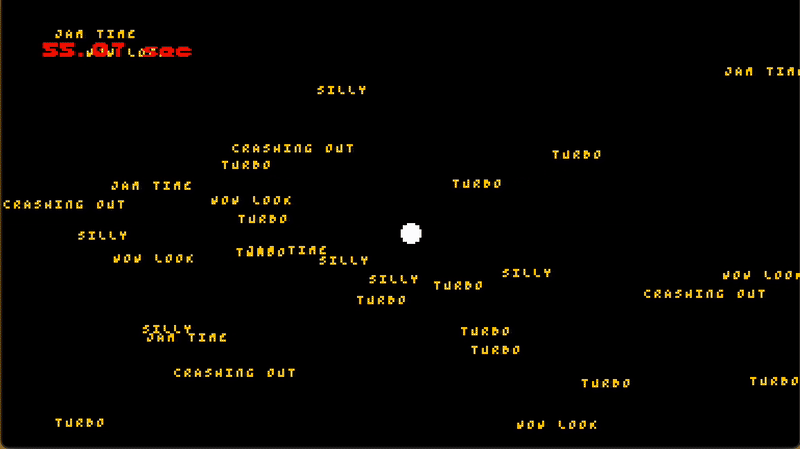
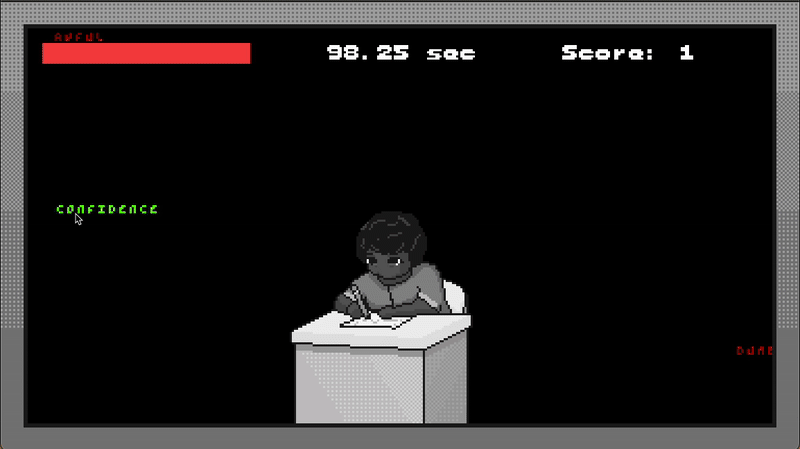
Leave a comment
Log in with itch.io to leave a comment.